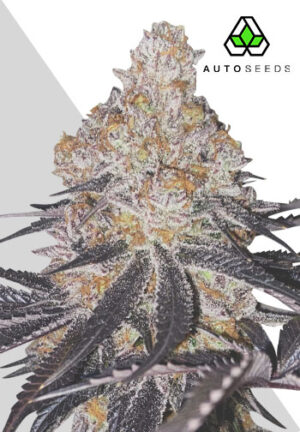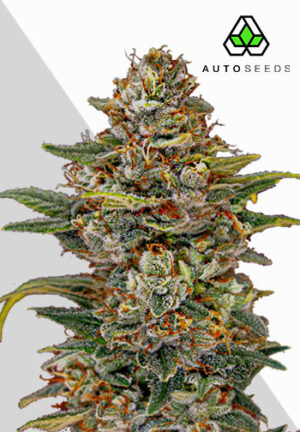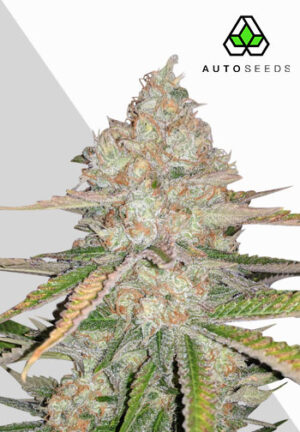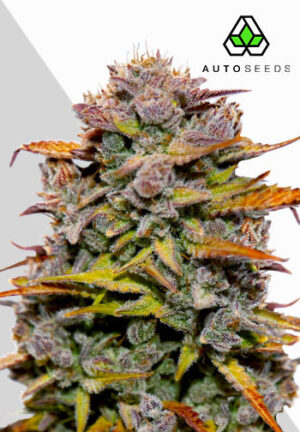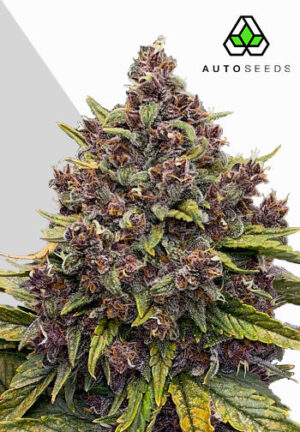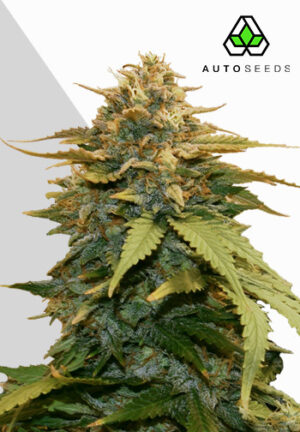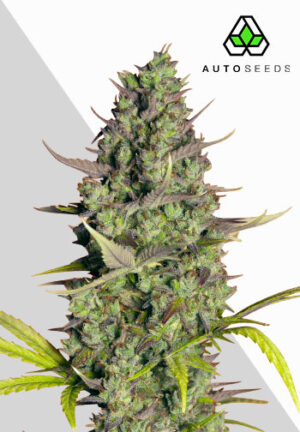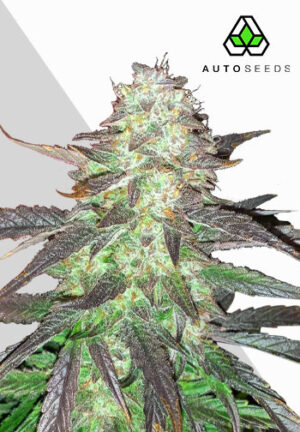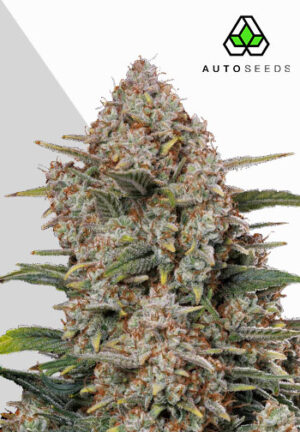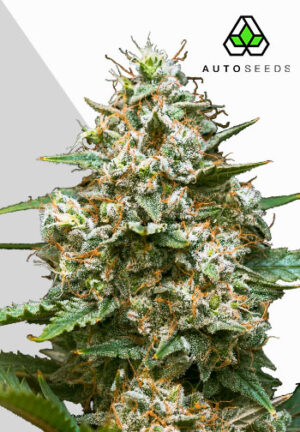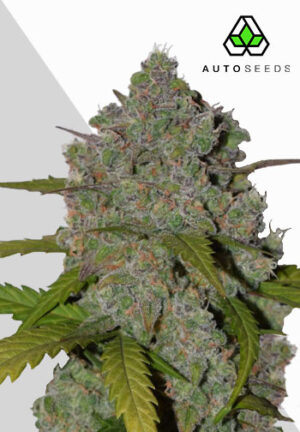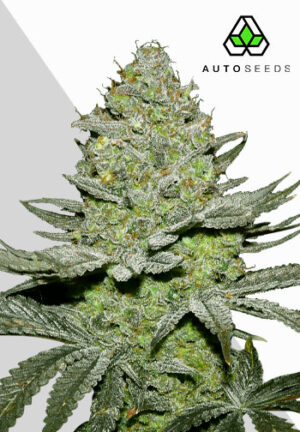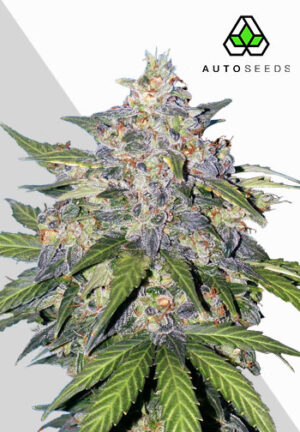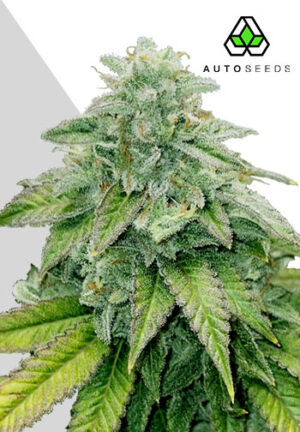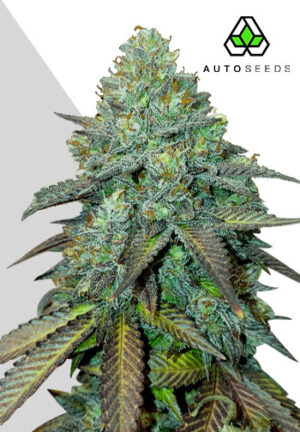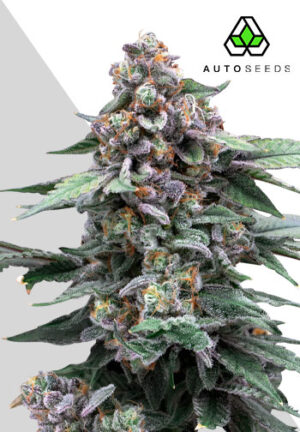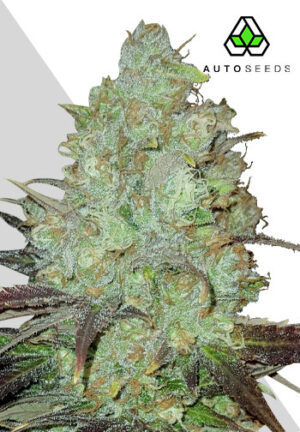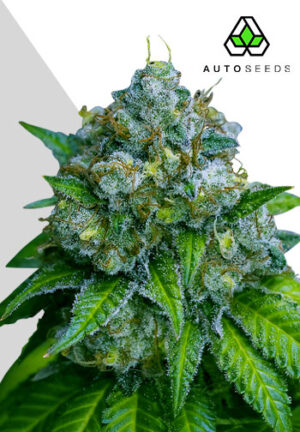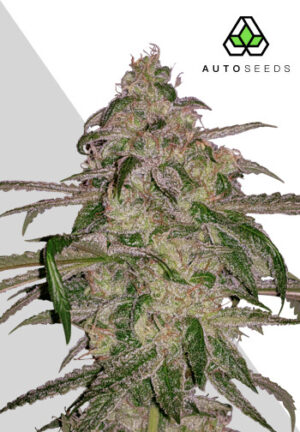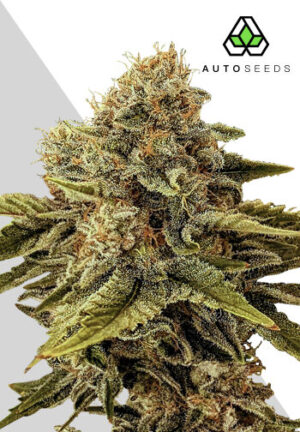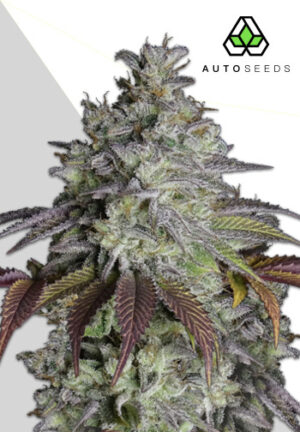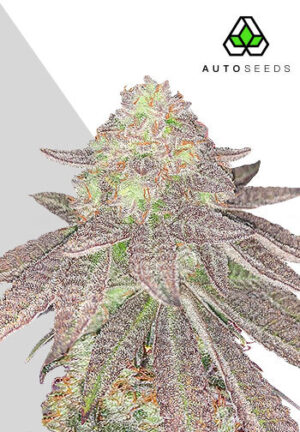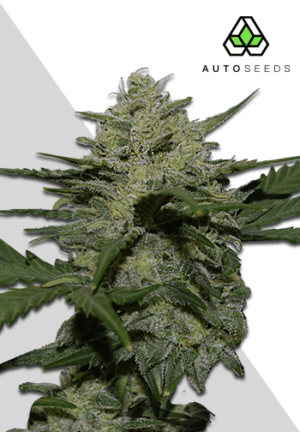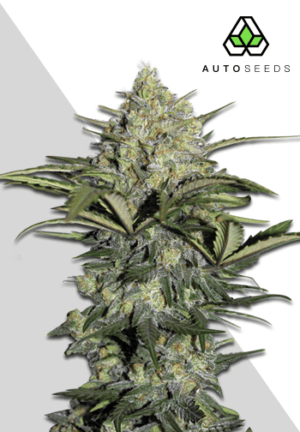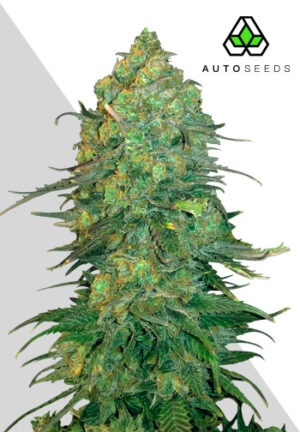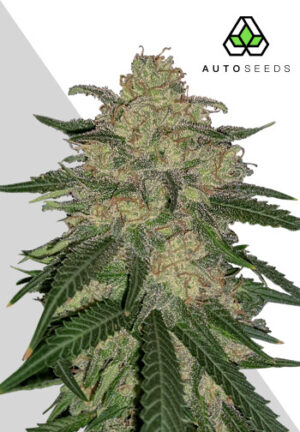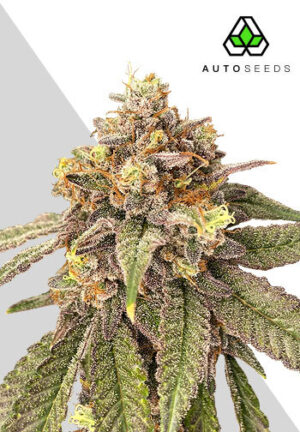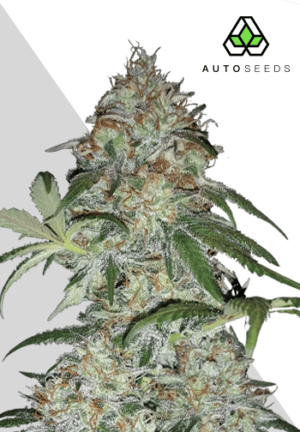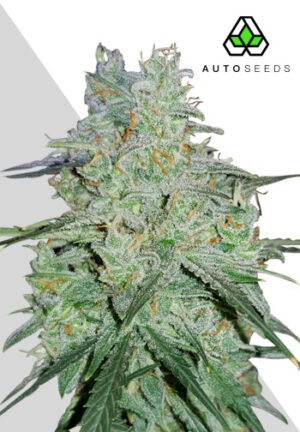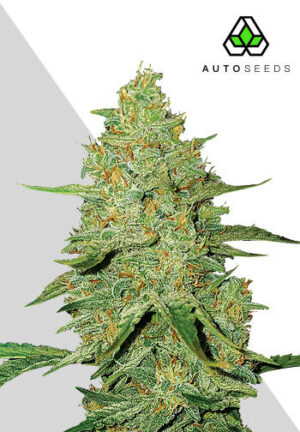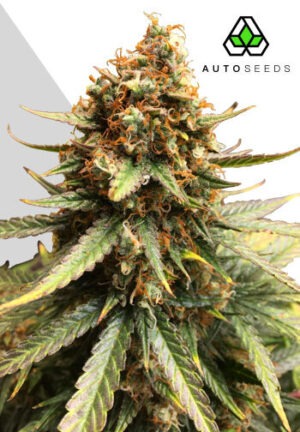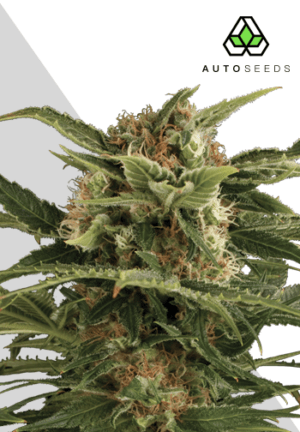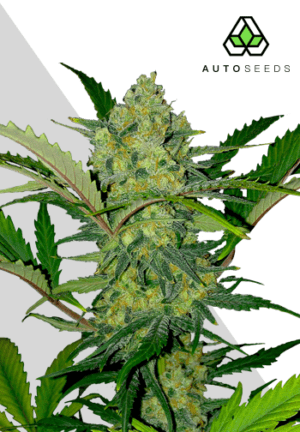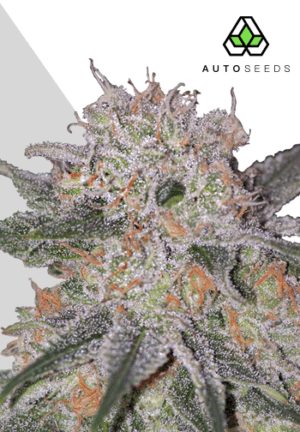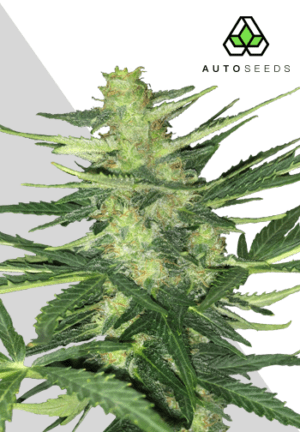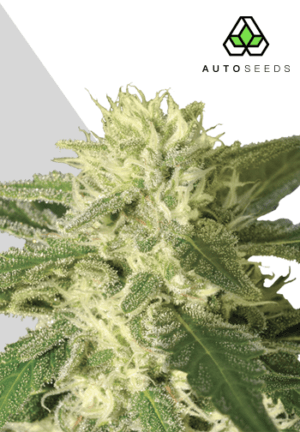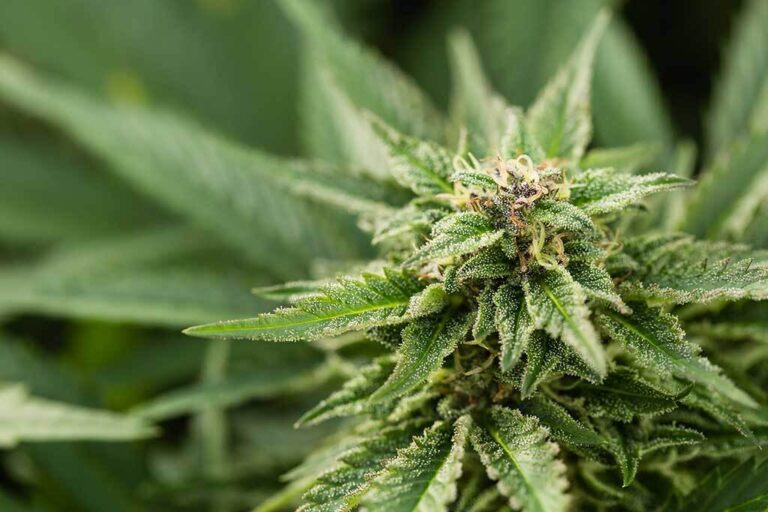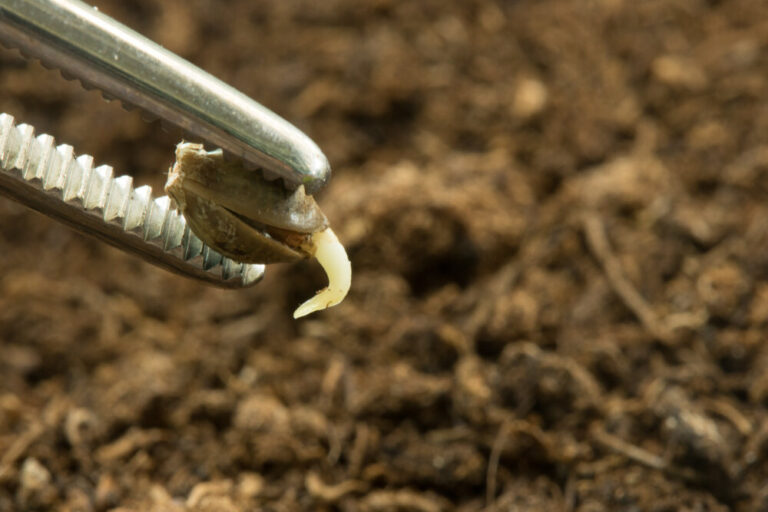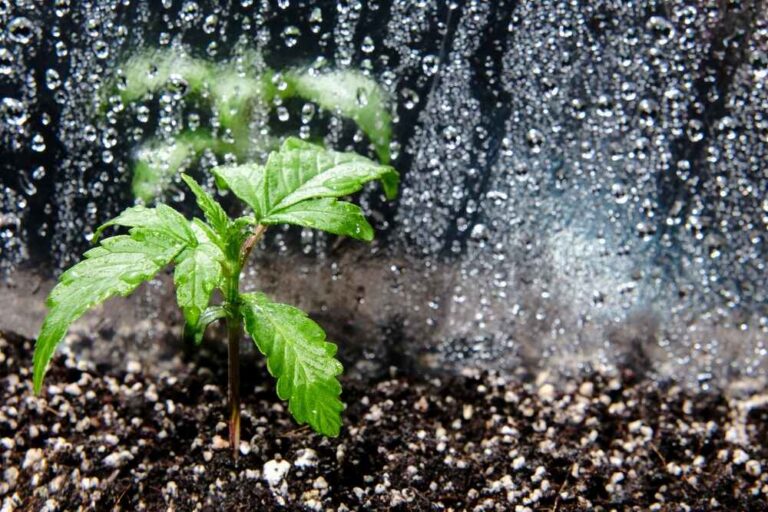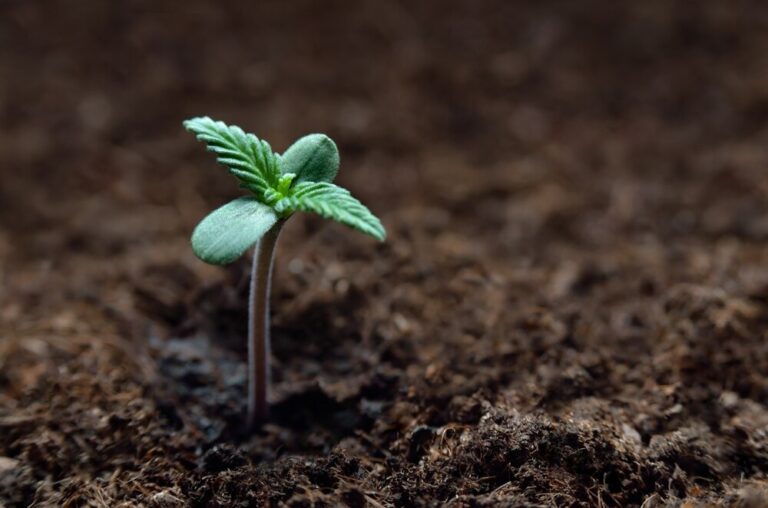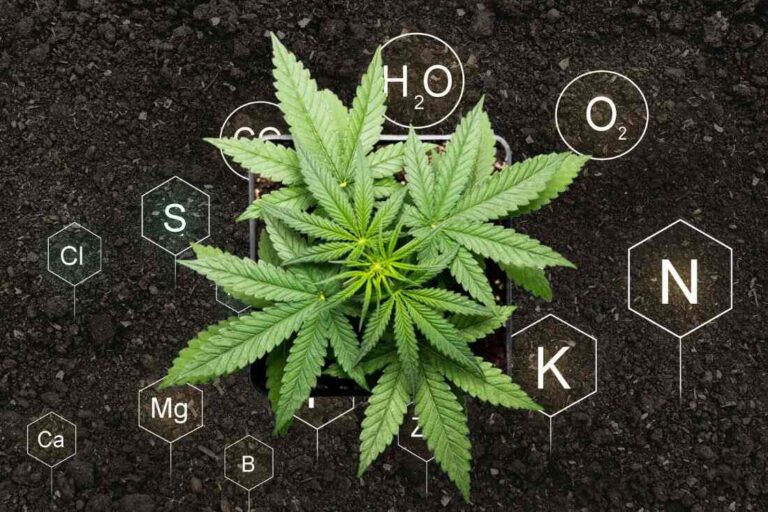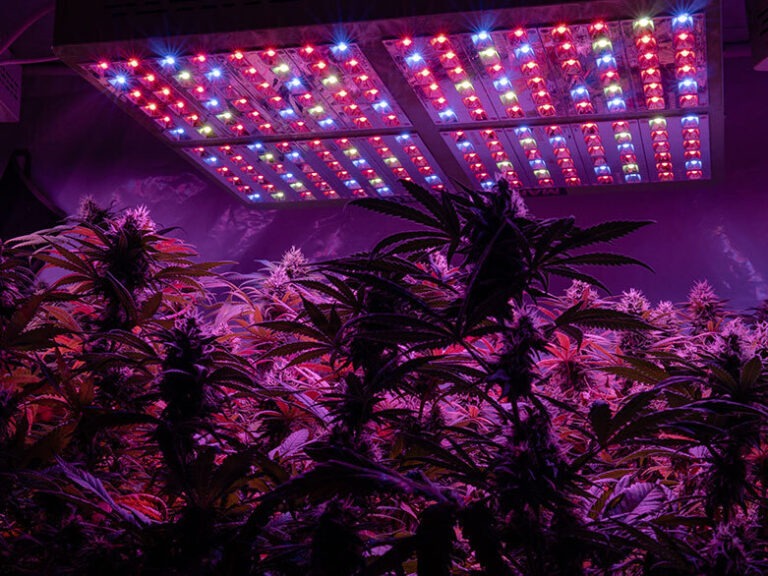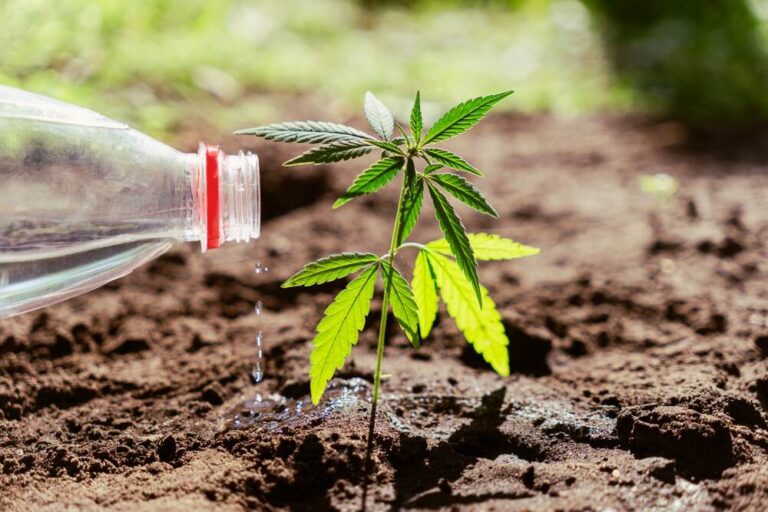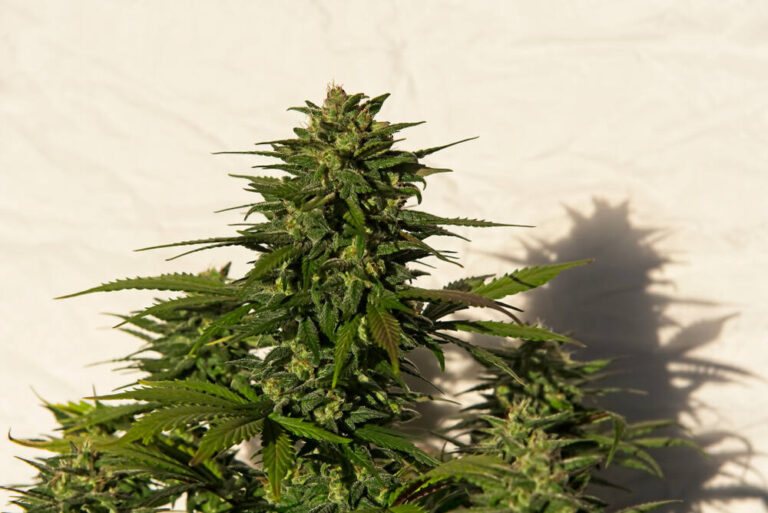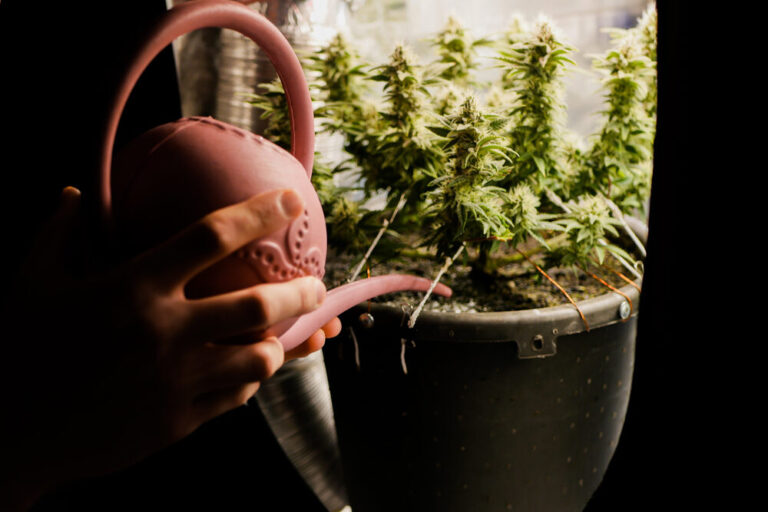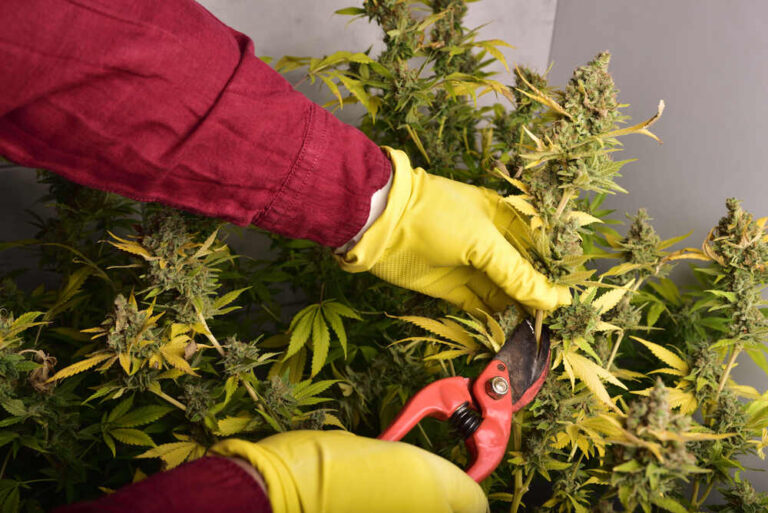We are the autoflowering specialists—always have been, always will be. That’s why we only sell autoflower genetics. We don’t want to be a jack-of-all-trades—we focus on one thing and do it exceptionally well, delivering fast-growing, high-quality, and easy-to-grow cannabis strains that you can rely on every time.
What are autoflowering seeds?
Autoflower cannabis seeds have significantly transformed home cultivation, making it quicker and easier than ever to produce high-quality bud without even needing to think about light schedules. Unlike traditional photoperiod strains—which rely on specific cycles of light and darkness to trigger flowering—autoflowering plants transition automatically into bloom after just a few weeks of vegetative growth making the entire growth cycle just 8-12 weeks from seed to harvest.
Benefits of Growing Autoflowering Seeds
The exceptional qualities of autoflowering strains are largely attributed to their unique genetic heritage from Cannabis ruderalis, a hardy subspecies originating from regions with harsh climates and extended daylight hours. Thanks to our meticulous selective breeding dating back to 2008, our autoflower strains now offer potent THC levels and massive yields. This makes them an excellent choice whether you’re a beginner just starting your cultivation journey or an experienced grower just looking for reliability and efficiency.
Here are just some of the things that made us fall in love with autoflowering plants:
- Faster Growth: Autoflowering cannabis seeds start flowering in just a few weeks and complete their lifecycle within just 8-12 weeks from germination, enabling you to produce multiple harvests within a single growing season.
- Ease of Cultivation: Due to their resilient genetics, autoflowers require minimal intervention, making them an exceptionally beginner-friendly method of cannabis cultivation.
- Compact Growth Structure: Their smaller size makes them ideal for discreet grows and suitable for cultivating even with limited space. Many of our happy customers grow their autoflower plants in cupboards, on balconies and in tents – no space is too small.
- Enhanced Resistance to Pests and Mold: The tough genetics inherited from the Cannabis ruderalis subspecies contribute significantly to their natural resistance against pests and fungal diseases.
- No Light Cycle Management: Unlike photoperiod strains, autoflowers are not dependent on light cycles, which simplifies both indoor and outdoor cultivation considerably.
- Superior Bud Quality: With the advancements we have made in breeding, our autoflowers now produce buds comparable in potency, flavor, and size to their photoperiod counterparts – but with only half the effort involved from you!
Beginners Guide to Growing Autoflowers
How to Germinate Autoflower Seeds
Start your autos right and the rest will follow. Here are some simple germination tips from our growing team to help you get started like a pro:
- Place a damp paper towel on a clean plate.
- Arrange autoflower seeds approximately an inch apart on the paper towel.
- Cover the seeds with another damp paper towel.
- Seal the setup with another plate to create a dark, humid environment.
- Maintain temperature at 21-26°C (70-80°F) and humidity around 60-70%.
- Inspect daily, re-moistening if necessary. Taproots usually emerge within 48-72 hours.
- Once a taproot is visible, carefully transplant seedlings into their final growing medium.
How to Plant Autoflower Seeds After Germination
Selecting the Correct Container:
- Autoflowers are sensitive to transplant stress; plant them directly in their final pots from day 1.
- Indoor Cultivation: Use 3-5 gallon (11-19 liters) containers.
- Outdoor Cultivation: Opt for larger 5-10 gallon (20-40 liters) pots for maximum root growth and yield.
Soil Preparation:
Create an optimal growing medium using well-draining, airy soil blends. Recommended components include:
- Perlite (ensures adequate drainage and aeration)
- Coco Coir (maintains moisture without waterlogging)
- Peat Moss (retains moisture and releases nutrients slowly)
Planting Procedure:
- Dig a small hole approximately 1 inch deep.
- Place the germinated seed gently, ensuring the taproot points downward.
- Carefully cover with soil, avoiding compaction.
How to Promote Growth After Planting Autoflowers
Now that you have popped your seeds its particularly important during the autoflower seedling stage to be very careful with your plants and the initial weeks after planting will significantly influence their overall health and final yield. Here are some expert growing tips to help you navigate through to the seedling stage:
Watering Guidelines:
- Days 1-4: Lightly mist soil surface, maintaining consistent moisture without saturation.
- First Week: Avoid direct watering of seedlings; instead, water gently around the base using a spray bottle or gentle stream to minimize stress.
- General Rule: Water only when the top inch of soil feels dry to prevent common issues like damping-off and root rot.
Caring for Young Autoflower Plants:
- Handle minimally: Seedlings are delicate and susceptible to growth disruption if excessively handled.
- Gentle airflow: Provide a gentle breeze using a small fan to enhance stem strength without causing wind stress.
- Nutrient management: Refrain from adding nutrients during the initial 10-14 days as seedlings rely on seed-stored nutrients.
Expected Growth Timeline (First 2 Weeks):
- Days 1-4: Seedlings emerge displaying initial leaves (cotyledons).
- Days 5-10: True leaves appear, and root development accelerates. Keep humidity around 60-70%.
- Days 10-14: Rapid growth phase begins as plants enter the vegetative stage, where you can introduce nutrients gently if necessary.
Optimal Environmental Conditions:
- Temperature: Maintain between 21-27°C (70-80°F).
- Humidity: Keep relative humidity (RH) at 60-70% initially, gradually reducing as plants mature.
- Lighting: Employ an 18/6 or 20/4 cycle using full-spectrum LEDs positioned at a safe distance to avoid stress and promote robust growth.
Optimal Light Cycles for Autoflower Plants
Unlike photoperiod cannabis strains, autoflowers do not depend on specific light cycles to trigger the flowering stage, providing flexibility for growers. Below are some recommended light schedules for your plants:
- 18/6 Cycle (18 hours light, 6 hours darkness): The most popular schedule offering an ideal balance between growth promotion and energy efficiency, allowing plants essential rest.
- 20/4 Cycle (20 hours light, 4 hours darkness): Beneficial for growers seeking slightly accelerated growth while still providing plants necessary downtime.
- 24/0 Cycle (Continuous light): While continuous illumination maximizes photosynthesis, it can increase stress levels. This cycle is generally recommended only for experienced growers comfortable managing plant stress effectively.
5 Key Tips to Maximize Autoflower Yield
- Maximize Light Exposure: Ensure optimal indoor lighting with full-spectrum LEDs delivering 600-900 µmol/m²/s, or guarantee 10-12 hours of direct sunlight outdoors. Position lights correctly to prevent stretching or burning.
- Use Low-Stress Training (LST): Gently bend and secure branches to boost light penetration and airflow. Avoid high-stress techniques such as topping due to autoflowers’ limited vegetative stage. Gentle defoliation is acceptable.
- Feed Appropriately and Avoid Overfeeding: Use nutrients at ¼ to ½ strength, employing NPK ratios of 10-7-5 during vegetative growth and 5-10-10 during flowering. Supplement with CalMag to address potential deficiencies.
- Enhance Root Health and Drainage: Cultivate plants in 3-5 gallon fabric pots filled with well-draining, airy soil or coco coir. Prevent overwatering by allowing the top 1-2 inches of soil to dry before watering again.
- Maintain Optimal Climate Conditions: Keep temperatures consistent at 21-27°C (70-80°F), humidity levels between 60-70% during vegetative growth and 40-50% during flowering, and ensure ample airflow to prevent mold and bud rot.
Nutrients for Autoflowering Plants
The three macro nutrients for cannabis plants are Nitrogen (N), Phosphorus (P), and Potassium (K) that are critical for the health of your plants.
Nitrogen supports vegetative growth, phosphorus promotes root and flower development, and potassium enhances plant resilience.
Autoflowers require lighter feeding compared to photoperiod strains due to their smaller size so its important to keep this in mind. Here is an example of a nutrient schedule specifically adjusted for autoflowers:
| Week |
Growth Stage |
NPK Ratio |
Dose Relative to Photoperiods |
| 1 |
Seedling |
Water only |
No nutrients |
| 2 |
Late Seedling |
2-1-2 |
1/8 dose |
| 3-4 |
Vegetative |
10-5-5 |
1/4 to 1/2 dose |
| 5 |
Early Flowering |
5-10-10 |
1/2 dose |
| 6-9 |
Flowering |
5-15-10 |
1/2 dose |
| 10 |
Harvest (Flush stage) |
Water only |
No nutrients |
When to Harvest Autoflower Plants
Determining the right moment to harvest your autoflowers makes a big difference to the potency of your bud. Use a jeweler’s loupe or magnifying tool to examine the trichomes up close. Here is a guide for what to look for:
- 0-30% Clear Trichomes: Too early—buds lack potency, aroma, and flavor.
- 50-70% Milky Trichomes: Peak THC—harvest now for maximum psychoactive effects, potency, and flavor.
- 20-40% Amber Trichomes: More sedative—ideal for a calming, body-focused high with pain-relieving properties.
Harvesting and Curing Autoflowers
- Harvest: Cut plants at the base and hang upside down in a dark, ventilated space (18°C, 45% humidity).
- Drying: Allow buds to dry over 10-14 days until slightly crisp externally.
- Curing: Store buds in glass jars, opening daily (burping) for two weeks, then weekly for 1-2 months to enhance flavor, aroma, and potency.
Advanced Tips for cultivating indoors
- Optimize lighting with full-spectrum LEDs, maintaining 600-900 µmol/m²/s PPFD levels.
- Keep daytime temperatures between 21-27°C and nighttime above 18°C. Adjust humidity from 60-70% during early stages to 40-50% in flowering.
- Enhance CO₂ levels (1200-1500 ppm) if using powerful LEDs for increased photosynthesis.
- Gradually increase nutrient solution EC from 0.8 to 1.4 through vegetative and flowering stages.
- Apply advanced LST methods such as SCROG or mainlining to maximize canopy coverage and yield.
Advanced Tips for cultivating outdoors
- Select sunny, south-facing locations providing 10-12 hours of direct sunlight.
- Use enriched super soil containing beneficial microbes and mycorrhizal fungi.
- Adjust watering methods based on local climate, utilizing mulch and drip irrigation in hot areas, or raised beds in rainy climates.
- Employ natural pest deterrents (marigolds, garlic, neem oil sprays) and weather protection (row covers, netting).
- Plan staggered plantings every 4-6 weeks for multiple harvests within a single growing season.
Buy Autoflowering Cannabis Seeds in the USA
Looking for high-quality autoflower seeds in the USA? We offer some of the best genetics tailored for American growers, including Cali classics like Gelato, OG Kush, and Girl Scout Cookies. Our seeds are ideal for a wide range of American climates, delivering fast, reliable harvests without the need for light cycle changes. Every order ships directly from New York with USPS tracking and typically arrives within 5 days. We back our seeds with a germination guarantee and accept all major U.S. credit cards, making it easy and secure to grow your favorite strains at home.
FAQ
How much will 4 autoflowers yield?
Typically, four autoflower plants can yield anywhere from 100 to 500 grams in total, depending on factors like strain genetics, lighting, nutrients, and growing conditions.
Are autoflowers better than feminized seeds?
We think so, yes! Autoflowers offer faster harvest times, easier maintenance, compact size, and consistent flowering regardless of light cycles, making them ideal for beginners and experienced growers alike.
Are autoflowers less potent?
No, autoflowers now contain a comparable amount of THC to photoperiod strains. Modern autoflower genetics can achieve THC levels of up to 28%, offering potent effects that rival traditional cannabis varieties.
How long does an autoflower take to finish?
Autoflower strains usually complete their entire lifecycle from seed to harvest within 8-12 weeks, making them significantly quicker than traditional photoperiod plants.
Is it better to grow autoflowers outside or inside?
Autoflowers perform well both indoors and outdoors. Indoors offers controlled conditions and consistent yields, while outdoors can provide larger plants and bigger harvests when given ample sunlight and suitable climates.
Do autoflowers double in size?
Yes, autoflowers typically double or even triple in size during their flowering phase, with most growth occurring in the first few weeks of flowering.
Are autoflowers still feminized?
Yes, autoflower seeds sold commercially are feminized, ensuring that each plant produces high-quality buds rather than pollen sacs.
What is the best way to store my autoflower seeds?
Store your autoflower seeds in a cool, dark, and dry place—ideally sealed in an airtight container in the refrigerator. This preserves viability and maintains seed quality for years.
What do autoflower cannabis seeds look like?
Autoflower weed seeds look just like regular photoperiod seeds—there’s no visual difference between the two. They’re typically small, round or slightly oval in shape, and range in color from light brown to dark brown, often with subtle tiger stripe or mottled patterns on the surface. Most are about the size of a match head or a small peppercorn. Despite their unique genetics, autoflower seeds are indistinguishable from photoperiod seeds based on appearance alone.
Read less



